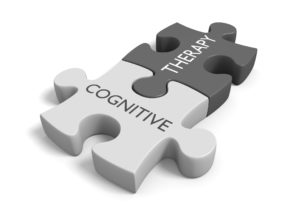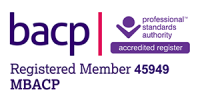The benefits of talking – it’s a human thing
Communicating with other people is therapeutic and helps us process life experiences
 Talking therapy is a psychological treatment that helps people overcome a range of problems such as depression, anxiety and stress. Talking therapy is a form of treatment for mental health, emotional and behavioural problems and can also help to resolve personal problems and other life issues. Talking therapy involves discussing concerns that affect your emotional and/or mental wellbeing together with a therapist.
Talking therapy is a psychological treatment that helps people overcome a range of problems such as depression, anxiety and stress. Talking therapy is a form of treatment for mental health, emotional and behavioural problems and can also help to resolve personal problems and other life issues. Talking therapy involves discussing concerns that affect your emotional and/or mental wellbeing together with a therapist.
Talking therapy allows an individual safe, confidential and non-judgemental time and space to discuss issues that are uncomfortable, confusing or painful with a professional therapist. Talking therapy can resolve negative feelings and thoughts, as well as allowing you to learn more about yourself and overcome issues and feelings that may be overwhelming you and holding you back.
In therapy you can talk freely without the worry of censoring yourself. Negative and unhelpful patterns of thoughts and behaviours are revealed so that you and your psychotherapist can identify and make sense of them. All forms of talking therapy enable underlying problems to surface so that they can be addressed and dealt with in a healthy and proactive way. If there is an understanding of why the problem developed in the first place, it will also help to devise and develop coping strategies to prevent its reoccurrence.
Talking therapy is just as effective for couples counselling as it is for individuals. It can help to treat many conditions such as anxiety, obsessive compulsive disorder (OCD), depression, stress, post traumatic stress disorder (PTSD) and phobias.
Types of talking therapies
There are a range of talking therapies that vary according to the techniques used by a therapist, the theory upon which the therapy is based and the needs of each individual client.
Talking therapy can include person-centred counselling which focuses on the relationship between the therapist and the client. Psychoanalytic therapy focuses on often deeply-rooted, unconscious thoughts and feelings that stem from past experiences. Psychodynamic explores unconscious thoughts and how they affect your behaviour, and solution-focused therapy looks at what you want to achieve in the future rather than exploring previous and past experiences.
Interpersonal therapy focuses on the social relationships that individuals have rather than focusing on thoughts and behaviour. Counselling, couples therapy and relationship counselling are also popular talking therapies that are used to discuss and work through problems with a professional therapist.
The evolution of talking therapies
The advancement of counselling and psychotherapy did not truly start developing until the end of the 19thcentury. Over the last 40 years, evidence has demonstrated that talking therapy is an effective treatment for a range of psychological problems. The NHS over recent years has increased funding for talking therapies because of the positive impact it can have on a person’s mental health.
Dr. Sigmund Freud founded a form of psychoanalysis that revolutionised thinking about the human mind. Freud was one of the most influential people in the 20thcentury because he changed our way of thinking about behaviour. Psychoanalytic or psychodynamic therapy was developed by Freud and is known as ‘the talking cure’ or ‘talk therapy’. It is based on the concept that a person’s behaviours and thoughts are not within their conscious control and focuses on childhood and past events that shape an individual’s behaviour patterns and thought processes.
Traditional psychoanalysis involves an individual to connect to and reveal their early childhood experience and recognise the impact of past experiences on the present. Freud believed that this awareness would change the behaviour, emotions and thoughts of the individual. This process would also release repressive emotions, thoughts and ideas through catharsis. However this type of therapy could be a lengthy process lasting months and years.
Other psychologists such as Karen Hornsey, Alfred Adler and Carl Jung further developed Freud’s psychoanalytical theory towards psychodynamic therapy which is similar. The modern approach to psychodynamic therapy is a shorter and less intense form of therapy that focuses on immediate problems. The focus is on revealing unconscious thoughts and feelings.
The evolution of the person-centred approach
 Client, or person-centred counselling, was introduced from the concepts of humanistic psychology by Carl Rogers in 1942 and developed further in the 1950’s. This method of psychology forms the idea that people are human beings and not a diagnosis, focussing on personal growth and development and what can be done in the present time. It was a revolutionary concept at the time and originally focused on the individual taking charge of the therapy which led to the individual developing a greater understanding of their self through self- exploration. Rogers believed that clients had the innate ability to find their own solutions in order to self-heal, with the support and motivation of a specially-trained therapist. Prior to Rogers, most counselling was counsellor-centred and directive.
Client, or person-centred counselling, was introduced from the concepts of humanistic psychology by Carl Rogers in 1942 and developed further in the 1950’s. This method of psychology forms the idea that people are human beings and not a diagnosis, focussing on personal growth and development and what can be done in the present time. It was a revolutionary concept at the time and originally focused on the individual taking charge of the therapy which led to the individual developing a greater understanding of their self through self- exploration. Rogers believed that clients had the innate ability to find their own solutions in order to self-heal, with the support and motivation of a specially-trained therapist. Prior to Rogers, most counselling was counsellor-centred and directive.
Rogers introduced ideas that challenged psychotherapy concepts. He thought that it was important there were the correct therapeutic conditions required for a successful outcome. The therapist acted as a therapeutic presence, listening in a genuine, respectful, non-judgemental and empathetic way. The therapy relies on the quality of the relationship and the trust built between the client and therapist, which is vital. These core conditions empowered clients to grow and change and person-centred therapy enabled them to understand themselves by opening up about problems and discussing issues in a transparent and honest way. He also introduced a totally new treatment approach with person-centred therapy that was based more upon the personal characteristics of the therapist rather than solely on therapy techniques or formal training.
Individuals can bring what they want to their therapy session and the client leads the counselling session. Person-centred counselling concentrates on what can be changed and improved in the present rather than relying on what has happened in the past.
The history of integrative psychotherapy
Integrative psychotherapy is a therapy that is a blend of different psychotherapy approaches to best suit the client and their needs. It was created by psychologist Richard Erskine PhD during a series of lectures he conducted in 1972 as a professor at the University of Illinois. This integration of therapies is a synthesis of the methods and concepts he thought most effective combining from person-centred therapy, cognitive behavioural therapy, transactional analysis, Gestalt therapy and psychodynamic therapy.
A therapist that uses integrative psychotherapy does not have just a single theory or approach to use, there is a variety of theories and methods that can be brought together and adjusted according to what an individual needs at any given moment.
The evolution of cognitive behavioural therapy (CBT)
 Cognitive behavioural therapy (known as CBT) is formed of many psychology disciplines, some of which are cognitive therapy, behavioural psychology and rational emotive behaviour therapy.
Cognitive behavioural therapy (known as CBT) is formed of many psychology disciplines, some of which are cognitive therapy, behavioural psychology and rational emotive behaviour therapy.
Cognitive psychology, introduced by Sigmund Freud and later advanced by Alfred Alder, was developed into two of the earliest forms of cognitive behavioural therapy along with rational emotive behaviour therapy (REBT) developed by Albert Ellis in the 1950’s. Aaron Beck formed the basis of cognitive behaviour therapy in the 1960’s that is practiced today.
Beck’s cognitive therapy highlights the importance of negative thoughts and is based upon insight-focused therapy emphasising changing negative thoughts and beliefs. The foundation is that a client’s beliefs have highly personal meanings which can be discovered by the client rather than being taught or interpreted by a therapist, and talking can help to discover and recognise these beliefs.






